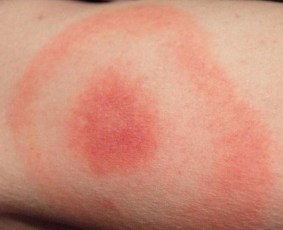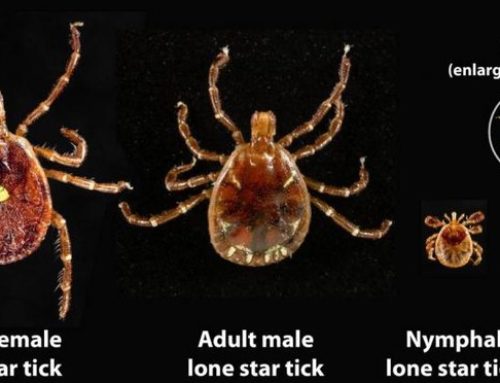Have you ever wanted to enjoy some time in the great outdoors but been concerned about getting poison ivy or bitten by a tick? Not only can we bet that you are bothered about getting bitten by insects, but it is also bothersome not to know what type of bite you have. We get it! With all the noise and fear around things like Lyme Disease your concern is reasonable. In this post we’re going to focus specifically on how to identify a tick bite, versus say that of a mosquito, and also to review some of the common tick bite symptoms.
Ticks are parasitic arachnids that usually grow to be about 5mm long and are from the family of the arachnids. These ectoparasites attach themselves to the skin of their host and live off them by sucking their blood. The tick has the same life cycle as other insects and bugs and it ranges from the egg to the larva to the pupa and then the adult tick. And bottom line is all of the phases of development of the tick depend on a blood meal to survive ergo… ticks needs hosts (including people) in order to hitch a ride and grab a meal.
HOW TO IDENTIFY A TICK BITE
 Tick bites are usually painless and almost unnoticeable because as they tick bites you it also secretes pain killers, called kininases, in their saliva which help them go unnoticed. You might most likely notice the bite when the tick falls of or you manually pull of the parasite from the bite point to reveal the bite.
Tick bites are usually painless and almost unnoticeable because as they tick bites you it also secretes pain killers, called kininases, in their saliva which help them go unnoticed. You might most likely notice the bite when the tick falls of or you manually pull of the parasite from the bite point to reveal the bite.
The bites can cause:
- A red swelling at the bite site
- Small red bite mark
- A rash
- A burning sensation and rash
- Sometimes there can be blisters when there is more than one tick at the bite site.
SYMPTOMS OF A TICK BITE
While some ticks carry are harmless and just want to live off the host, others have more to offer than just taking some blood, they also transmit diseases. These tick-borne diseases have a variety of symptoms. How long until symptoms appear after tick bites is usually between 3 days to one week. Some of the tick symptoms in humans are:
- Nausea
- Headache
- Swollen lymph nodes
- Neck stiffness
- Fever and cold
- A complete body rash
- Weakness and muscle pain
SYMPTOMS OF TICK BITES THAT CAUSE DISEASES
You should note that not all tick bites give you a disease. But almost all tick bites that introduce disease give you a rash. What the rash look like will then determine the kind of disease you get.
- LYME DISEASE: When bitten by a tick that transmits Lyme disease, most people get a rash. The rash shows up about 4 to 30 days after you are bitten. There is usually around redness around the bite, but then the rash becomes bigger and spread as the days go by. The redness can reach to about 5 inches in width, while the spot is soft, it is usually not itchy or painful. Lyme disease is the most common of all types of tick-borne illnesses.

Early stage Rocky Mountain spotted fever. Via https://www.cdc.gov/rmsf/healthcare-providers/signs-symptoms.html
Some people are quick to associate bulls-eye rah with the Lyme disease but this is not usually the cases. The bull’s eye rash just comes up after the initial rash has been around for a while. The treatment of the rash is usually with an antibiotic.
- ROCKY MOUNTAIN SPOTTED FEVER: The rash for the rocky mountain spotted fever appears 2 – 5 days after they get bitten by the tick. It usually starts out as a small pink spot usually on your wrist or ankles. Then it spreads to the other parts of your body. The tick responsible for this is American dog tick and the rocky mountain wood tick (from where the name was gotten).
- TULAREMIA: The Tularemia also known as the rabbit fever or deer fly fever is usually spread by deer fly, contact with infected animals or ticks. The initial symptom is characterized by a painful open sore at the spot of the tick bite and it usually appears 2 – 7 days after you get bitten by the tick. They are usually spread by the dog tick, lone star tick, and the wood tick.
- SOUTH TICK ASSOCIATED RASH ILLNESS: This disease is transmitted by the lone star tick or most commonly called the hard tick. When bitten, you get a rash just like the one noticed in the Lyme disease. A red bulls-eye swelling with the bite at the center.
Other tick bites are characterized by a red swelling at the spot, fever and a headache. So if you just come in from a hiking trip and notice any of these symptoms, be sure to check in with your doctor for a diagnosis.
And of course, these are just some of the more common tick borne diseases and illnesses associated with tick bites.
HOW TO PREVENT TICK BITES
Ticks are usually common in the woods and outdoors generally. So does this mean you shouldn’t enjoy your usual hiking trips, hunting or enjoying a fun day with your dogs? No! you should do what you enjoy but just be careful to take precautions like:
- Wearing long sleeves, trousers and tucking the trousers into your socks. You can also wear gloves. The idea is not to leave any skin uncovered.
- Checking for ticks after being outdoors. Check your clothes and every exposed part of the skin or hair to make sure the ticks are not present.
- Apply insect repellant on clothing and skin to deter the ticks from attaching unto them.
- Wearing very light clothing that would enable you to spot ticks crawling on them is also advised.
WHEN SHOULD I CONTACT MY DOCTOR
Tick bites are usually not painful or harmful. But in the event that you start noticing some symptoms it best to contact your doctor. The doctor would most likely prescribe antibiotics and pain relief drugs.
CONCLUSION
Tick is common in the Midwestern and coastal U.S State and other countries. They are blood sucking parasites that latch onto clothing or skin of animals and humans alike.
The bites are usually painless and harmless but sometimes can cause diseases which include Lyme and rocky mountain fever disease.
The treatment involves the use of antibiotics and pain relievers.
Images:
Lyme Disease ‘bull’s eye’ via http://marbellalymeclinic.com/en/symptoms/
Early stage Rocky Mountain spotted fever via https://www.cdc.gov/rmsf/healthcare-providers/signs-symptoms.html
Tick Bite via https://commons.wikimedia.org/wiki/File:Tick_bite.jpg





Leave A Comment